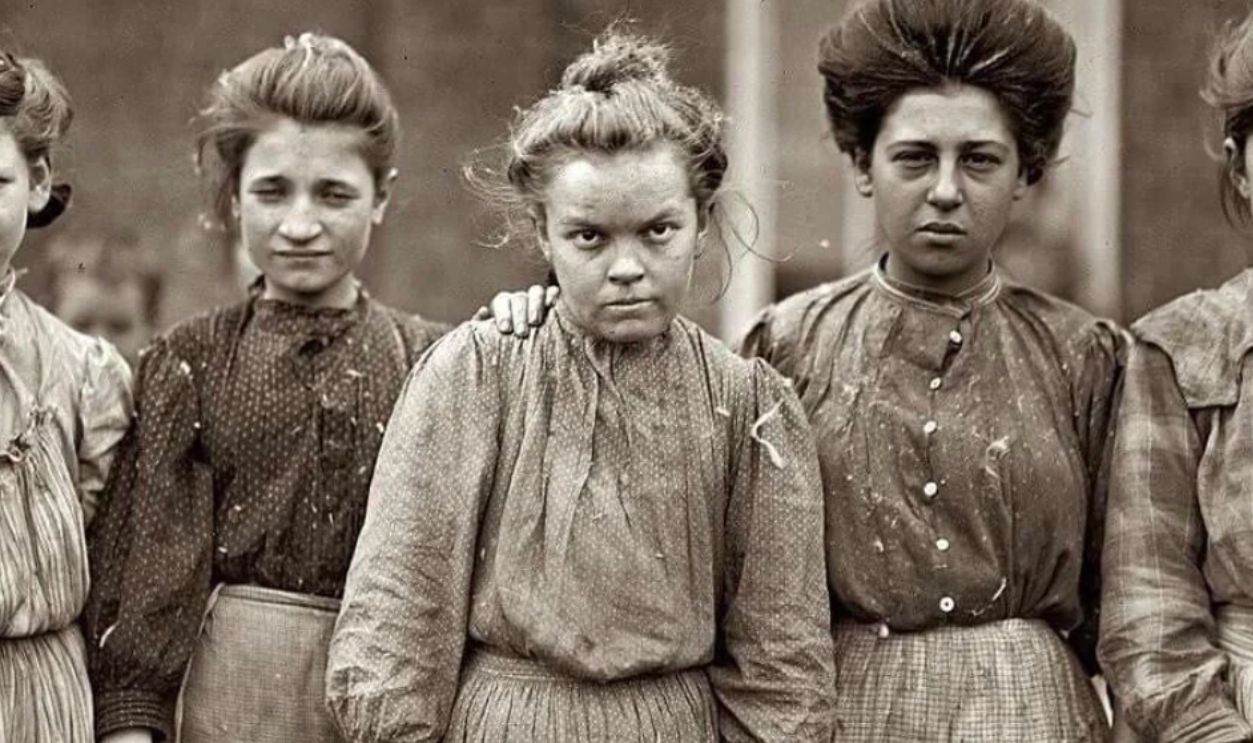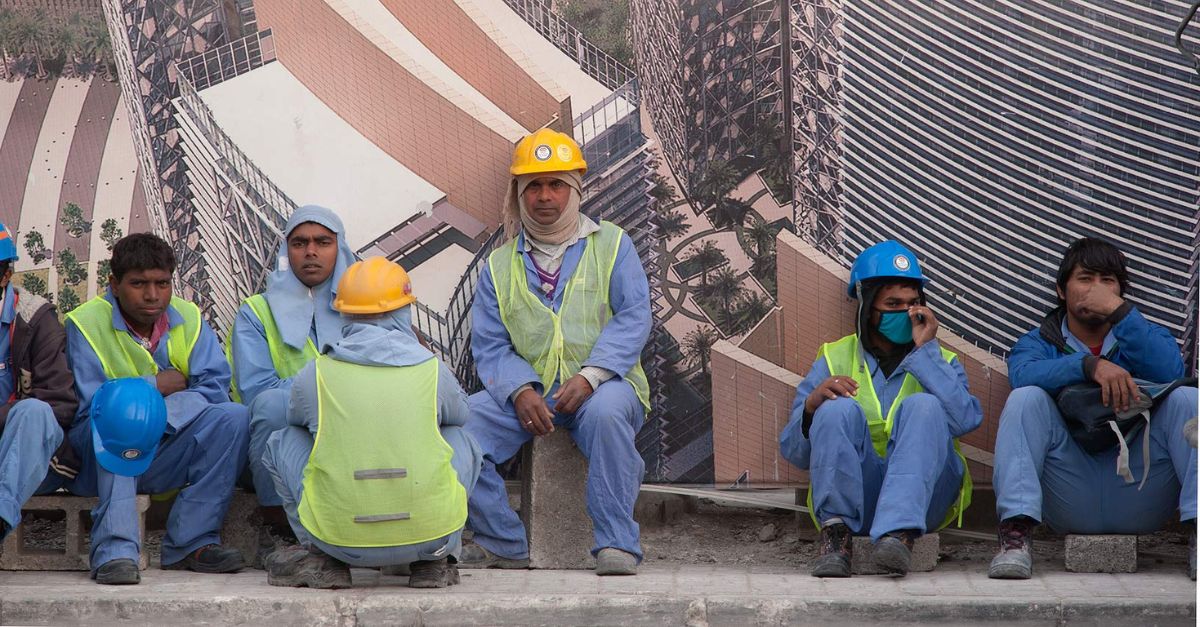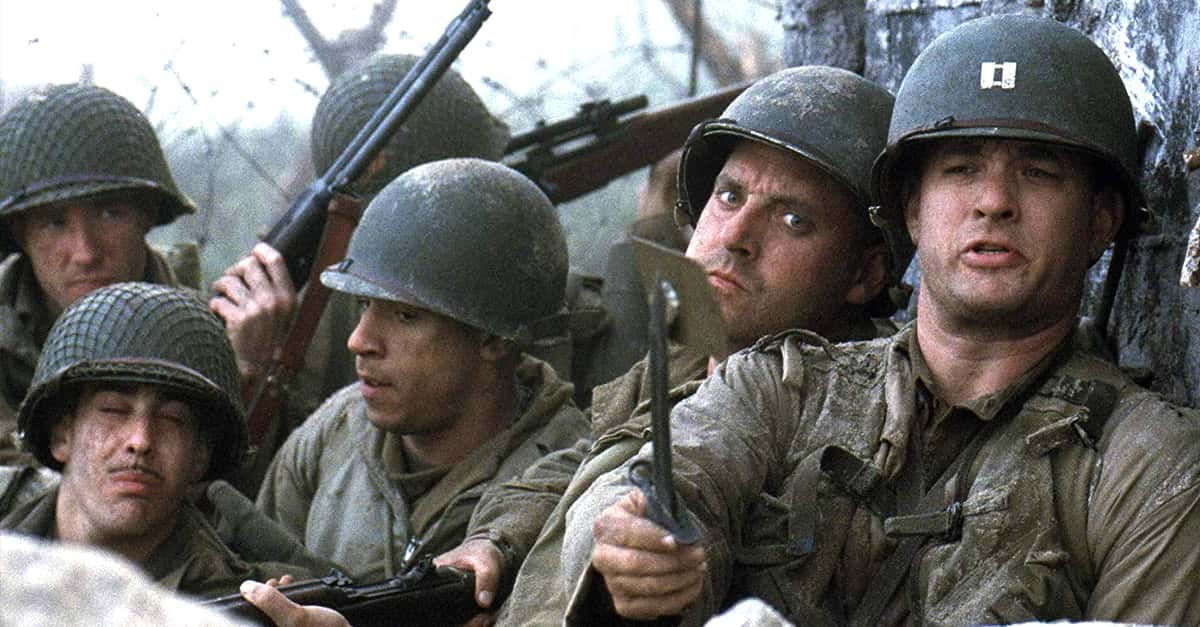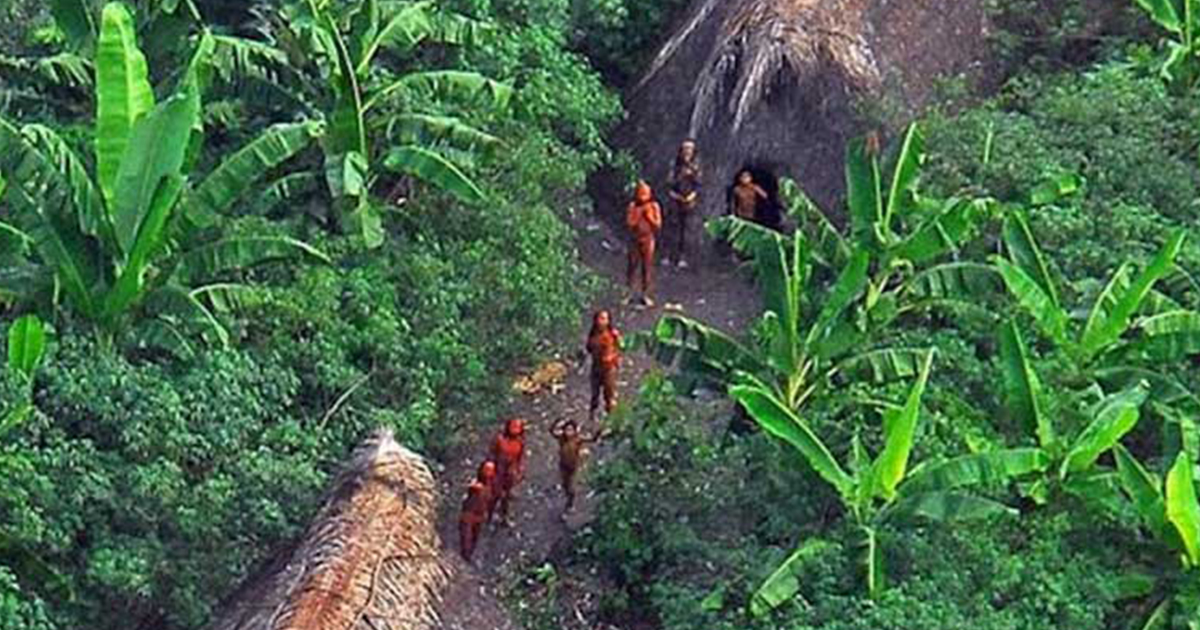Grateful Grind
Yes, stale office coffee and bosses who micromanage are horrible. But these stories throughout history will make you adopt a grateful attitude. At least you're able to go to work and come back whole. Prepare to have all the dirty laundry—from the older centuries to this day—aired.

What Makes Work Unbearable?
A worker's life can be grueling due to low wages, unsafe environments, exposure to harmful substances, discrimination, exploitation, and more. These conditions often result in illnesses, fatalities, strikes, and, if worst comes to worst, industrial disasters. It's good to know, though, that such tragedies have historically driven progress in labor laws.
 Unknown Author, Wikimedia Commons
Unknown Author, Wikimedia Commons
Triangle Shirtwaist Factory
New York City in 1911 was a hub of opportunity and a powder keg of industrial neglect. Young immigrant women worked in the Triangle Shirtwaist Factory, cramped into tight spaces that would make modern HR departments shudder. Their workspace was a tinderbox waiting to ignite.
 The Triangle Shirtwaist Factory Fire (March 25, 1911) by NationSquid
The Triangle Shirtwaist Factory Fire (March 25, 1911) by NationSquid
No Place To Run
Management's paranoia about theft led to a deadly decision of locking the emergency exits. A fatal mistake because when fire erupted on March 25, these locked doors became death traps. Workers faced an impossible choice: burn alive or jump from ninth-floor windows. Survival became a grotesque lottery of chance.
 Unknown Author, Wikimedia Commons
Unknown Author, Wikimedia Commons
A Turning Point In Labor Rights
The tragedy claimed 146 lives, mostly immigrant young women and girls. And the public wasn't happy about it. This public outrage transformed grief into action, sparking massive labor reforms. New York State established the Factory Investigating Commission, which conducted thorough investigations and recommended new laws to improve workplace safety.
 Bain News Service photograph, Wikimedia Commons
Bain News Service photograph, Wikimedia Commons
Lowell Mill Girls
When girls today dress up and play house, Massachusetts textile mills (in the 1830s) employed them as mill girls. These girls, some as young as 10 years old, typically worked 12-14 hours a day, six days a week. The conditions were harsh: poor ventilation, small, and space filled with dangerous machinery.
 English: NPS, Wikimedia Commons
English: NPS, Wikimedia Commons
Controlled Lives, Controlled Bodies
Beyond the factory conditions, these workers also lived under strict regulations that controlled every aspect of their existence. They had mandated behavior codes that dictated everything from dress to social interactions. Dormitories monitored their movements, and food was rationed with military precision. One word: oppressive.
 Unknown Author, Wikimedia Commons
Unknown Author, Wikimedia Commons
Squad Goals, Work Miracles
Despite brutal conditions, these young women began protesting. They published their own newspaper, staged protests, and challenged the industrial machine. Their activism laid critical groundwork for future labor and women's rights movements, changing personal struggle into collective power.
Child Labor In UK Coal Mines
Victorian England turned children into human machinery. Kids as young as five- descended into pitch-black coal mines. The sinister reason is that their small bodies were perfect for moving through impossibly narrow tunnels. These weren't things children should be doing—they were stripped of childhood's most basic protections.
 Lewis Wickes Hine (1874-1940), Wikimedia Commons
Lewis Wickes Hine (1874-1940), Wikimedia Commons
Survival Below Ground
Imagine working 12-hour shifts in complete darkness, breathing coal dust, risking cave-ins and suffocation. They additionally faced constant danger, like collapsing tunnels, harmful gases, and machinery that could crush them in seconds. Education was a distant dream because surviving had become their only curriculum.
 Wellcome Collection gallery, CC BY 4.0, Wikimedia Commons
Wellcome Collection gallery, CC BY 4.0, Wikimedia Commons
Legislative Awakening
Public awareness and investigative reports gradually changed societal perception. Landmark legislation like the Mines and Collieries Act 1842 began protecting child workers. It also introduced a minimum age of ten years for boys employed in underground work. It wasn't as it is today, but it was a start.
 Unknown Author, Wikimedia Commons
Unknown Author, Wikimedia Commons
Bangladesh Garment Factory Collapse
Rana Plaza was a global economic exploitation hub with over 5,000 occupants. Multinational clothing brands sourced products from this death trap by prioritizing profit over human life. Workers knew the building was unsafe—poor construction and structural flaws—but feared losing their only income source.
 Sean Robertson, CC BY-SA 4.0, Wikimedia Commons
Sean Robertson, CC BY-SA 4.0, Wikimedia Commons
Cracks Showing
On the day before the incident, a local TV show reported cracks forming, but that led to an evacuation in a few hours. On April 24, 2013, the establishment collapsed, killing 1,138 workers and injuring more. The world watched in horror as victims were crushed beneath concrete and steel.
 Sharat Chowdhury, CC BY 2.5, Wikimedia Commons
Sharat Chowdhury, CC BY 2.5, Wikimedia Commons
Global Accountability
From this incident, brands like Primark, Walmart, Joe Fresh, Mango, Benetton, and others were compelled to sign safety agreements, and global conversations about supply chain ethics intensified. The lives lost in this incident were really sad, but it gave birth to new reforms that still live on today.
 Animesh Biswas, CC BY 4.0, Wikimedia Commons
Animesh Biswas, CC BY 4.0, Wikimedia Commons
Chilean Copper Mine Collapse
Copiapó's copper mines (San José mines) were subterranean death traps. Miners were dying at high rates in Chile's unsafe mines, about 34 people yearly as of 2000. The miners would go down thousands of feet below ground daily, never sure they would come back up.
 Hans Lindqvist, CC BY-SA 3.0, Wikimedia Commons
Hans Lindqvist, CC BY-SA 3.0, Wikimedia Commons
Miracle Of Survival
On August 5, 2010, the mine collapsed, trapping 33 workers 2,625 feet (800 meters) under. The miners first felt the shakes and hid in a safe zone; they attached a note on the drill being extracted on the surface, and it read, "Estamos bien en el refugio los 33".
 desierto_atacama, CC BY-SA 2.0, Wikimedia Commons
desierto_atacama, CC BY-SA 2.0, Wikimedia Commons
It Meant "We Are Well In The Shelter, The 33 Of Us"
For 17 days before the note was found, the trapped miners' daily rations were microscopic: two spoonfuls of tuna, a morsel of peach, and a sip of milk. Finally, on August 22, rescue efforts were successful because engineers created an unprecedented rescue shaft, pulling miners from seemingly impossible depths.
 Hugo Infante/Government of Chile, CC BY 2.0, Wikimedia Commons
Hugo Infante/Government of Chile, CC BY 2.0, Wikimedia Commons
Bhopal Disaster
On December 2 to 3, 1984, at the Union Carbide India Limited (UCIL) pesticide plant, toxic gas methyl isocyanate (MIC) began leaking. This was around 10 am and by 2 pm, the residents around started experiencing symptoms. Worse off, there were several early leaking incidents in 1976, 1981, 1982, and 1983.
 Bhopal Medical Appeal, Martin Stott, CC BY-SA 2.0, Wikimedia Commons
Bhopal Medical Appeal, Martin Stott, CC BY-SA 2.0, Wikimedia Commons
A Night Of Terror
Since most had no proper protective equipment like gas masks or suits that could have shielded them from the harmful gas, thousands died soon after, and thousands more suffered long-term effects. Entire families were wiped out, and communities were destroyed. The gas attacked the lungs, eyes, and nervous systems.
 Julian Nyča, CC BY-SA 3.0, Wikimedia Commons
Julian Nyča, CC BY-SA 3.0, Wikimedia Commons
The Wake-Up Call
The disaster exposed the criminal negligence and it brought on board the Indian Central Bureau of Investigation (CBI) with the help of American attorneys. It triggered conversations about industrial safety, environmental justice, and corporate accountability. The demise of over 8K was a wake up call that didn't have to happen.
 Obi, CC BY 2.0, Wikimedia Commons
Obi, CC BY 2.0, Wikimedia Commons
Marikana's Colonial Conditions
These South African mines were modern-day plantations of exploitation where miners were paid ridiculously low wages. There was also union rivalry and the lack of safety measures. As if that wasn't enough, they also suffered through systematic oppression from the companies hiring them.
 JMK, CC BY-SA 3.0, Wikimedia Commons
JMK, CC BY-SA 3.0, Wikimedia Commons
Protest Turns Deadly
Even though the strikes started on August 10, 2012, they went all the way to the 16th. The miners took to the streets to protest fair wages. The response? Police opened fire on protesters, slaughtering 34 workers in broad daylight. The ground ran red with the blood of innocent workers.
 Marikana Massacre | A look back at days that led to the massacre by SABC News
Marikana Massacre | A look back at days that led to the massacre by SABC News
Pay For Your Actions
Of course, you cannot keep such an event under wraps because, soon enough, it went global. This cruel reaction by the police brought up the ongoing violence of economic systems that treated workers as disposable. As of 2022, the government paid over R150 million (approximately $8 million) in compensation.
 Marikana Massacre | A look back at days that led to the massacre by SABC News
Marikana Massacre | A look back at days that led to the massacre by SABC News
The Lattimer Coal's Crimson Event
Pennsylvania's coal country in 1897 had immigrants from Poland, Lithuania, and Slovakia trapped in a system designed to extract every ounce of their humanity. The coal mines companies paid workers peanuts after long working hours, typically beyond 12 hours.
 Luminous-Lint, Wikimedia Commons
Luminous-Lint, Wikimedia Commons
A March Of Hope
In a peaceful protest, the workers demanded basic human rights. They marched with hope, believing in the power of collective action. Instead, they encountered a wall of state-sanctioned brutality. Sheriff's deputies changed a peaceful march into a crimson field. 21 miners passed on, shot in cold blood. Their crime?
Demanding Labor Laws That Protect Them
Demanding dignity in a system that saw them as replaceable was their undoing. The tension in the area brewed and gave way to a massive uproar that had even leaders seek prosecutions for the unruly sheriffs—74 were arrested but later acquitted. This event gave way to fair wages and safety boosts.
The Pullman Cycle
Pullman, Illinois, was a dystopian experiment in corporate control. Workers lived in company housing, shopped in company stores, and existed entirely within the corporation's suffocating ecosystem. Every dollar earned was immediately cycled back to the company's coffers.
 In The Story of Pullman, 1893., Wikimedia Commons
In The Story of Pullman, 1893., Wikimedia Commons
Economic Pressure Cooker
When economic depression hit, Pullman slashed wages by 30% but maintained high rents, and so did everything else. Workers found themselves in an impossible situation—working more for less, trapped in a system of perpetual debt. Their desperation grew with each passing month of economic suffering.
 Payton Chung from DCA, USA, CC BY 2.0, Wikimedia Commons
Payton Chung from DCA, USA, CC BY 2.0, Wikimedia Commons
Nationwide Uprising
The strike spread like wildfire across railroad networks. Federal troops were deployed to crush worker resistance, turning the conflict into a national spectacle of worker suppression. The aftermath saw Labor Day established—a bitter irony born from worker blood.
 Unknown author, Wikimedia Commons
Unknown author, Wikimedia Commons
The Anthracite Underground Inferno
Back to Pennsylvania's coal mines, but this time, workers were fighting for higher wages, shorter working hours, and union recognition. The government was at a great loss because if the strikes took off, there would be a shortage of fuel that would keep major American cities cold during the winter.
 The Mebane Greeting Card Co., Wikimedia Commons
The Mebane Greeting Card Co., Wikimedia Commons
Collective Roar
The United Mine Workers of America (UMWA), which oversaw the strikes, garnered members over a year—from 10K to 115K members between 1899 and 1900. They challenged not just their employers but an entire economic system designed to keep them in perpetual servitude. Their unity became their most powerful weapon.
 Library of Congress, Wikimedia Commons
Library of Congress, Wikimedia Commons
Presidential Intervention
President Theodore Roosevelt's intervention had the Commissioner of Labor look into the matter. For the first time, the federal government acknowledged workers as more than expendable labor. Miners secured wage increases and reduced hours—a small victory in a long, brutal struggle.
 Pach Brothers, Wikimedia Commons
Pach Brothers, Wikimedia Commons
The Bread And Roses Strike
Lawrence, Massachusetts, textile companies fired skilled workers and resorted to hiring immigrant workers who had zero experience in a repetitive, dangerous environment. This was problematic on several fronts; people died before turning 25, and they hired young people below 14 using false credentials. What pay do you think they received?
 Unknown Author, Wikimedia Commons
Unknown Author, Wikimedia Commons
Long Hours Only To Receive Peanuts
These factories introduced a new looming technique that had them lay off thousands of workers. But if you think it made things better, it got worse. The young workforce was to work faster and get paid peanuts—$8.76 for 56 hours. For 60 hours, you'd get $9.00.
 Unknown Author, Wikimedia Commons
Unknown Author, Wikimedia Commons
It Got Worse, Then Better
The workers lived in crowded homes and their daily diet was bread, beans, and molasses. 1912 brought new working hours from 56 to 54 and this meant lower wages. People walked out. This gave rise to the strike which resulted in at least a few of their demands being met.
 Unknown Author, Wikimedia Commons
Unknown Author, Wikimedia Commons
The Neglect Of Workers with Disability At Walmart
If you thought labor battles were only a blast from the past, you are in for a treat because they still occur in our modern times. One incident that shocked the world about discrimination was this one. In 2021, Walmart's treatment of workers with disability came under scrutiny. Why?
 Singing Walmart greeter brings tears to shoppers in Chardon by WKYC Channel 3
Singing Walmart greeter brings tears to shoppers in Chardon by WKYC Channel 3
Systemic Issues Within Walmart's Culture
Reports revealed frequent violations of the Americans with Disabilities Act (ADA). Tasks assigned to disabled employees were often unsuitable, exacerbating their challenges. Some were even fired because of their disabilities. This neglect increased absenteeism and also sidelined these workers. Worse of all, it stripped them of their dignity and equal opportunity.
 Walmart to make `every effort` to keep greeters with disabilities by WGN News
Walmart to make `every effort` to keep greeters with disabilities by WGN News
A Barrier To Inclusivity
These failures revealed broader corporate shortcomings in fostering equity and inclusivity. It also emphasizes the need for transformative cultural change. Well, Walmart paid and is still paying for this neglect—in one particular suit, they paid a solid 70 grand to a former employee and rehired them.
 Walmart Corporate, CC BY 2.0, Wikimedia Commons
Walmart Corporate, CC BY 2.0, Wikimedia Commons
Unsafe Working Conditions At Amazon
This year, OSHA identified hazardous working conditions at multiple Amazon facilities, including those in Colorado, Idaho, and New York. Workers at these sites were found to be exposed to ergonomic hazards, such as lifting heavy packages and performing repetitive motions, which have led to a surge in musculoskeletal injuries.
 Maryland GovPics, CC BY 2.0, Wikimedia Commons
Maryland GovPics, CC BY 2.0, Wikimedia Commons
Long Hours, High Injury Rates
The high demands on workers to meet performance quotas at Amazon warehouses have resulted in injuries from lifting, bending, and twisting under pressure. These particularly affect workers' backs and joints. Despite this, Amazon has been criticized for its inability to implement effective safety measures across multiple locations.
 Amazon workers file 26 complaints for dangerous and racially hostile conditions by CBS Chicago
Amazon workers file 26 complaints for dangerous and racially hostile conditions by CBS Chicago
Regulatory Failures And Ongoing Scrutiny
Despite numerous citations from OSHA, Amazon has failed to fully address the systemic safety issues in its warehouses. OSHA proposed additional penalties for non-compliance, yet the company continues to operate with minimal changes. We just hope this does not lead to people losing their lives before changes are enforced.
 Amazon prepping for last minute holiday deliveries, deadlines approaching by FOX5 Las Vegas
Amazon prepping for last minute holiday deliveries, deadlines approaching by FOX5 Las Vegas
The Ongoing Use Of Child Labor In Global Supply Chains
Under this topic, there are a few incidents still happening today. First is in the Democratic Republic of Congo, where children as young as seven are involved in cobalt mining for renewable energy technologies like electric car batteries. These children work in hazardous conditions with minimal protection.
Forced Labor In Chinese Manufacturing
The second one is in China. Here, forced labor continues to be a significant issue in the production of aluminum and polysilicon used in electronics. The U.S. Department of Labor's 2024 report highlights the prevalence of labor trafficking, where workers work grueling hours and under dangerous conditions.
 Robert Scoble, CC BY 2.0, Wikimedia Commons
Robert Scoble, CC BY 2.0, Wikimedia Commons
The Need For Ethical Supply Chain Practices
These events point out that we need stronger regulation and corporate accountability. Multinational companies must ensure transparency in their supply chains and adopt ethical sourcing practices. Governments and organizations must enforce laws against exploitative labor, while consumers can demand more responsible production standards to eliminate these violations globally.
Was It All Worth It?
As sad as these stories were, they're living testimonies of human endurance. Generations fought so we could have basic workplace rights. Every comfortable office, every regulated workday, and every safety measure exists because workers before us bled for progress.
 Greg Walters, CC BY 2.0, Wikimedia Commons
Greg Walters, CC BY 2.0, Wikimedia Commons












